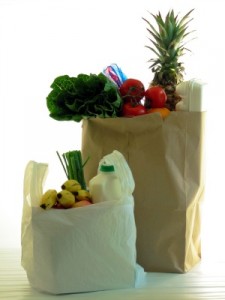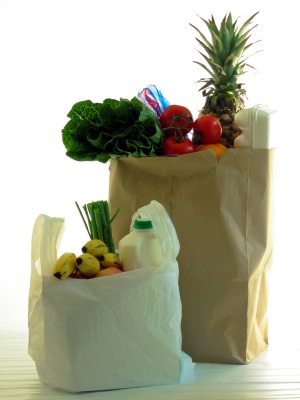
As a regular at a your local grocery store, you complete your usual chore of grocery shopping and decide to buy more food compared to your usual intake. The cashier asks if you would prefer “paper or plastic”. The thought of carrying a paper bag that is more prone to break than a plastic one doesn’t seem practical; so you decide to choose plastic instead. At home, you feel relieved carrying a whole bunch of food at once without having it rip apart, but the guilty feeling looms over you as you think about your recent decision at the grocery store. Now you have piles of plastic bags left over. With no particular use with them you end up throwing them in a non-recyclable compost. Now your guilty conscious should come into play. Looking at this decision you may find this as a huge problem today. We must grasp the awareness on how to recycle plastic bags, understand the harm from the them and how cities are making a courageous choice by banning it.
In the early 1950’s, Swedish engineer Sten Gustaf Thulin invented the “plastic bag”. He wanted to create a bag that was lightweight and convenient for people to hold. Unfortunately, this lightweight modern bag has factored to many disasterous pollutants from the effects of production use. Part of production use includes burning fossil fuels; because of this, 22.5 to 30 million bags waste about 11 barels of oil each year.
According to the California Integrated Waste Management Board, “California uses more than 19 billion plastic bags every year. People have been treating them as litter instead of an environmental issue”.
Without a doubt people have been using plastic as litter. On land, people throw plastic in drainage systems, which can block the drainage and factor to many types of flooding. A good example would be the flooding that occurred in Bangladesh, India between 1988-1998.
On water, plastic bags have been affecting the marine debris and marine animals. To animals, plastics seem like food; when ingested, it can kill an animal instantly. 100,000 deaths that include ingestion and strangulation occur within animals like sea turtles, sea gulls and dolphins per year.
This environmental problem can lead to hazardous health effects too. The durability of the plastic bags takes centuries for them to decompose. Even when it decomposes, it releases toxic substances in our environment. Some of these toxic substances include bisphenol A (BPA) and PS oligomer. Exposure of BPA and PS oligomer is an alarming fact for hormonal dysfunction in humans. Most hormonal dsyfunction can link to cancer, diabetes, obesity, sexual reproductive development and hyperactivity.
In 2010, California’s ban on plastic bags became a NO; but cities in California are fighting to change the decision to a YES. So far they have implement the ban in local markets and chain stores by gaining the senator’s support. The success of the support has issued the senator to restrict the ban in multiple California cities. San Francisco is the first known city to ban plastic shopping bags. Since then, other cities have followed like San Jose, Fairfax, Sunnyvale, Monterey, Los Angeles and Malibu.
Some solutions to these problems would factor to our knowledge on recycling and the use of reusable bags. Recycling plastic bags is another way to decrease impact on the environment. A proper teach-in class on recycling is the key to educate people about our environment. When you learn how to recycle; it can prevent a habitat from proliferating to become hazardous.
A reusable bag has helped the environment decrease in it’s plastic production use. About 20,000 plastic bags can be reduced if someone were to shop with a reusable bag everyday. Most reusable bags are inexpensive and durable. They can hold more capacity compare to a plastic bag.
So next time you stop by your local grocery store and the cashier askes “plastic or paper?” You proudly show off your reusable bag and reply “Neither. Keeping it green.”
Source : www.plasticsinfomart.com









